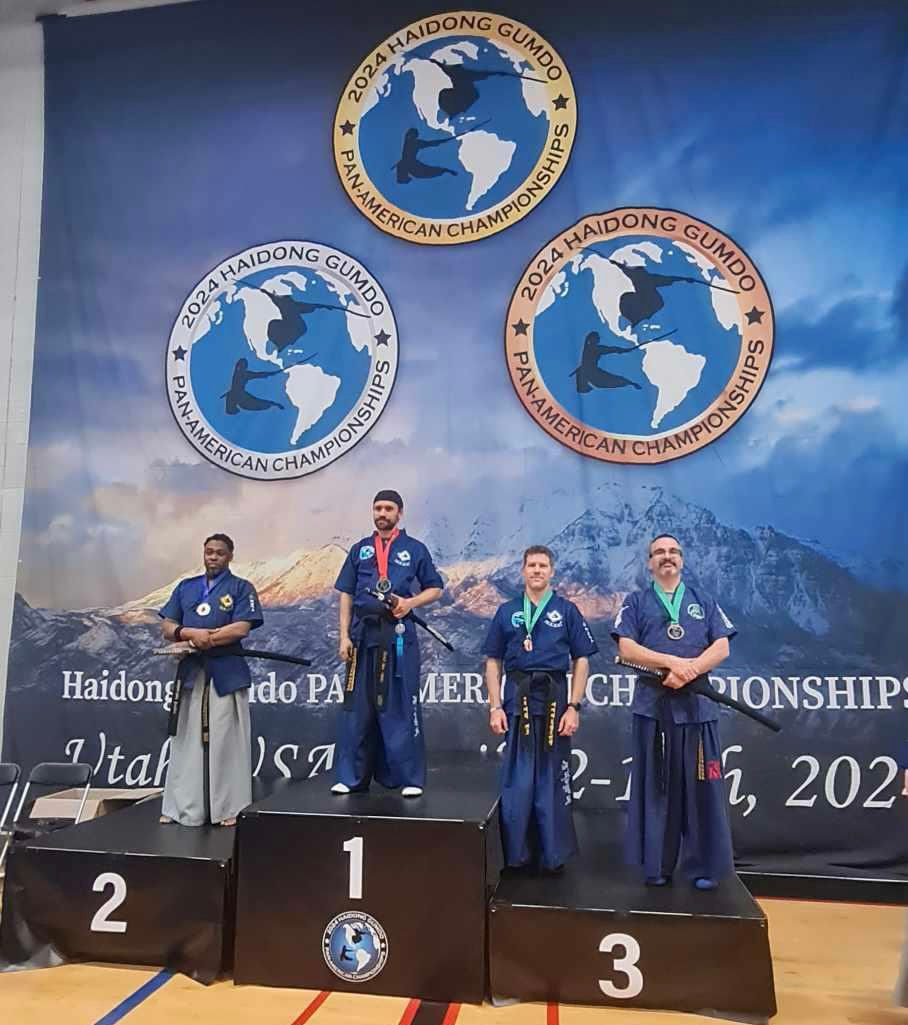Common sword training injuries and how to prevent them
- jacobsjf
- Nov 26, 2022
- 2 min read
Haidong Gumdo is an exciting, fun, and safe low contact martial art to practice. However, as with any physical activity, there is always some degree of risk. Most injuries actually come from people hurting themselves!
For example, it is not uncommon for an overly enthusiastic gumdosa to trip on their own pants, catching their toes, or even sustaining other injuries from a subsequent fall. The pants worn as part of the Haidong Gumdo dobok, or uniform, are similar to the Japanese hakama used in arts ranging from kendo and iaido to aikido, and so are quite loose and baggy at the bottom. Trying to run in uniform will sometimes lead to tripping, and so it is important to learn how to move quickly and properly. Master Brian Gihm discussed this very issue in his 2012 interview with KBS, linked here: https://world.kbs.co.kr/service/contents_view.htm?menu_cate=people&board_seq=155317&page=44
Other problems can arise in the wrist and elbow from improper sword technique. The left wrist in particular can suffer when cutting from right to left, as some practitioners can develop what Master John Jacobs has jokingly called “T-rexing”. This occurs when the left elbow and wrist are bent at an extreme angle and pulled too close to the body. Not only is this position more likely to cause injury, it also makes for less successful cutting. It is also important to maintain proper grip on the sword, and not allow the hands to rotate around the handle.
Next are other joint issues, as older practitioners often suffer from knee pain and feel that they cannot participate because of this. However, there are numerous modifications to stances and techniques that can be made for people with knee issues, and proper transitions between stances can be very important in protecting the knees and hips. In daedose, or long front stance, for example, one should be turning the left leg first to open the hips, then dropping the weight, then extending the right leg, and finally shifting the weight forward. Similarly in bokhose, or crouching tiger stance, the emphasis should be on separating the outward and downward motions. Proper body kinetics and alignment are essential, and everyone is encouraged to consult a doctor or physical therapist and avoid damage to the joints.
With a mind towards longevity and care for the body, Haidong Gumdo is an art that can be practiced for a lifetime. The difference that a well-trained, experienced instructor can offer cannot be understated. If you are local to Maryland, give us a call or send us an email today. If you live outside of our area, check the school locator at www.eastcoasthaidong.org , and see if there is an accredited instructor near you.

Proper body alignment when drawing the sword in daedose, or long front stance.



Comments